The obvious birds at both refuges - the ones that find themselves being photographed over and over again, and not just by me (you’ll see a lot of telephoto lenses in a stroll along the boardwalk in either place, and many of these birds are so tame that you can get respectable results with a smartphone) are the long-legged waterbirds - herons, ibises and spoonbills, and storks. These are the so-called “glamour birds”, once almost wiped out by plume hunters supplying the millinery trade but today back in numbers.
At one time or another I have seen almost every breeding heron in North America north of Mexico at either Green Cay or Wakodahatchee (the exceptions, the Yellow-crowned Night Heron (Nyctanassa violacea) and the Reddish Egret (Egretta rufescens), prefer salt or brackish water but occur not far away. They probably both show up at one or the other wetland when I am not looking. In the meantime, here are a few of the others, starting with the largest of the lot, the Great Blue Heron (Ardea herodias).
The commonest heron at both wetlands is probably the Tricoloured Heron (Egretta tricolor) [I get fussy about Canadian vs. American spellings]. This might be a good place to point out that the terms “heron” and “egret” don’t mean much. This species is always called a heron but is a member of the genus Egretta, while the Great Egret (Ardea alba) belongs to the same genus as the Great Blue. Generally egrets are white and herons aren’t, but even that doesn’t hold true as some egrets (including the Reddish Egret) have both white and non-white color phases.
The Black-crowned Night Heron (Nycticorax nycticorax) is one of the most widespread birds in the world, extending to every continent except Australia and Antarctica. This is a member of (presumably) the North American race hoactli.
White Ibises (Guara alba) are so common and widespread in South Florida that they tend to be taken for granted. It is hard to think of a bird that you are likely to find wandering around on your front lawn as one of the most spectacular birds in the country, but I think this species qualifies.
I don’t think anyone would deny the “spectacular” label to the White Ibis’s cousin the Roseate Spoonbill (Platalea ajaja).
It’s hard to take your eyes off this one.
It’s hard to take your eyes off this one.
We used to think that all of the long-legged glamour birds were each others’ closest relatives, but DNA studies have shown that this is not the case. Herons, for example, are closest to pelicans - closer, in fact, than the birds I was taught in my youth to think of as pelican relatives, including these Anhingas (Anhinga anhinga)....
The Double-crested Cormorant population at Wakodahatchee has been infiltrated by small numbers of a North American rarity, the Neotropic Cormorant (Phalacrocorax olivaceus). The Neotropic is the common (indeed abundant) cormorant over most of Latin America, but it is a recent interloper further north. At Wakodahatchee the two species hybridize. These could be hybrids, though the white border to the throat patch on the central bird in the upper photograph is typical for the Neotropic, as is the white plume on the bird in second photo.
A good many of the people who come to the wetlands to see birds are nonplussed by this one. It is large, certainly spectacular, and ought to be easy to identify, but at least some of the bird guides visitors carry around do not seem to include it. The reason is that this bird does not actually belong here. It is a Grey-headed Swamphen (Porphyrio poliocephalus), a bird that by rights ought to be confined to tropical Asia. The birds in Florida are descendants of escapees from the Miami Zoo in the aftermath of Hurricane Andrew, which demolished the zoo’s Wings of Asia exhibit, and they seem to be on the increase. To make matters more confusing, until recently this birds was considered only a race of the Purple Swamphen (Porphyrio porphyrio) and it is still listed under that species in some standard guides.
There is, besides, a native American cousin of the swamphen that is often mistaken for it: the Purple Gallinule (Porphyrio martinicus). The native species is quite a bit smaller, though, with a differently-shaped and -coloured bill and yellow, rather than red, legs.
One of the more difficult things to get across to beginning birders, I think, is that not everything that swims like a duck is, in fact, a duck. Wakodahatchee has both ducks and non-ducks; chief in the former category is the lovely Black-bellied Whistling Duck (Dendrocygna autumnalis), a fairly recent (since 1968) arrival from tropical America.
The Blue-winged Teal (Anas discors), also a genuine duck, is an abundant winter visitor in South Florida. This is a male.
Coots, gallinules and grebes, though, are not ducks. Oddly enough, the closest relatives of grebes, including this winter-plumage Pied-billed Grebe (Podilymbus podiceps), would appear to be flamingos - probably the most counterintuitive revelation to come out of analyses of avian DNA, but a revelation now backed up by morphological and behavioural evidence.
One of the easiest ways to demonstrate that a grebe is not a duck is to get a look at its feet - something often easy to do at Wakodahatchee as the birds dive beneath the boardwalk. Grebe feet are not webbed, but lobed. As the bird draws its foot forward the lobes fold down around the toes, reducing drag in the water, but open up again into swimming paddles as the swimmer pushes itself forward.
Among the songbirds, few are more obvious than the Boat-tailed Grackle (Quiscalus major). Here are two males, measuring each other up.
The surprise at Wakodahatchee, this time, was a cousin of the grackle that counts as only an occasional winter visitor: an immature male Yellow-headed Blackbird (Xanthocephalus xanthocephalus), a species more likely to turn up in a prairie marshland. It is something of a rarity in Florida, and I had only seen it once before here.
Like a number of other American blackbirds (Icteridae), Yellow-heads frequently search for insect food in the bases of dead leaves. The bird's rather chisel-shaped beak is ideal for inserting into a folded leaf. Once in, the bird spreads the leaf apart by opening its bill, a behaviour called "gaping".
Turkey Vultures (Cathartes aura) can be seen flying overhead almost anywhere in South Florida, so we can follow this one to a quite different habitat from the freshwater wetlands we have been exploring so far.
We are now at the seacoast east of downtown Boca Raton, where my grandson Ryan is examining a bit of wood bearing a few Gooseneck Barnacles (Lepas anatifera). This may seem like quite a zoological departure in a post supposedly about birds, but mediaeval naturalists would not have thought so; these barnacles were once thought to give birth to Barnacle Geese (Branta bernicla).
Barnacle Geese don't occur in Florida - in fact they barely reach northeastern North America - but wintering Sanderlings (Calidris alba) do, in numbers, and they are a familiar sight as they scamper along the waterline.
American Herring Gulls (Larus smithsonianus) [or, if you prefer, just Herring Gulls (Larus argentatus)] are common wintering birds here too, but in recent years large gulls in South Florida have become well worth a second look.
This bird, noticeably darker than any Herring Gull, is a Lesser Black-backed Gull (Larus fuscus), a common species in Europe. It was recorded in North America only in 1934, but in recent decades it has become an increasingly common winter visitor. It has even bred here a few times - though not in Florida (try Maine instead). Anyway, this one was the highlight of our trip to the beach (well, it was for me).
One of the more difficult things to get across to beginning birders, I think, is that not everything that swims like a duck is, in fact, a duck. Wakodahatchee has both ducks and non-ducks; chief in the former category is the lovely Black-bellied Whistling Duck (Dendrocygna autumnalis), a fairly recent (since 1968) arrival from tropical America.
The Blue-winged Teal (Anas discors), also a genuine duck, is an abundant winter visitor in South Florida. This is a male.
Coots, gallinules and grebes, though, are not ducks. Oddly enough, the closest relatives of grebes, including this winter-plumage Pied-billed Grebe (Podilymbus podiceps), would appear to be flamingos - probably the most counterintuitive revelation to come out of analyses of avian DNA, but a revelation now backed up by morphological and behavioural evidence.
One of the easiest ways to demonstrate that a grebe is not a duck is to get a look at its feet - something often easy to do at Wakodahatchee as the birds dive beneath the boardwalk. Grebe feet are not webbed, but lobed. As the bird draws its foot forward the lobes fold down around the toes, reducing drag in the water, but open up again into swimming paddles as the swimmer pushes itself forward.
Among the songbirds, few are more obvious than the Boat-tailed Grackle (Quiscalus major). Here are two males, measuring each other up.
The surprise at Wakodahatchee, this time, was a cousin of the grackle that counts as only an occasional winter visitor: an immature male Yellow-headed Blackbird (Xanthocephalus xanthocephalus), a species more likely to turn up in a prairie marshland. It is something of a rarity in Florida, and I had only seen it once before here.
Like a number of other American blackbirds (Icteridae), Yellow-heads frequently search for insect food in the bases of dead leaves. The bird's rather chisel-shaped beak is ideal for inserting into a folded leaf. Once in, the bird spreads the leaf apart by opening its bill, a behaviour called "gaping".
Turkey Vultures (Cathartes aura) can be seen flying overhead almost anywhere in South Florida, so we can follow this one to a quite different habitat from the freshwater wetlands we have been exploring so far.
We are now at the seacoast east of downtown Boca Raton, where my grandson Ryan is examining a bit of wood bearing a few Gooseneck Barnacles (Lepas anatifera). This may seem like quite a zoological departure in a post supposedly about birds, but mediaeval naturalists would not have thought so; these barnacles were once thought to give birth to Barnacle Geese (Branta bernicla).
Barnacle Geese don't occur in Florida - in fact they barely reach northeastern North America - but wintering Sanderlings (Calidris alba) do, in numbers, and they are a familiar sight as they scamper along the waterline.
American Herring Gulls (Larus smithsonianus) [or, if you prefer, just Herring Gulls (Larus argentatus)] are common wintering birds here too, but in recent years large gulls in South Florida have become well worth a second look.
This bird, noticeably darker than any Herring Gull, is a Lesser Black-backed Gull (Larus fuscus), a common species in Europe. It was recorded in North America only in 1934, but in recent decades it has become an increasingly common winter visitor. It has even bred here a few times - though not in Florida (try Maine instead). Anyway, this one was the highlight of our trip to the beach (well, it was for me).

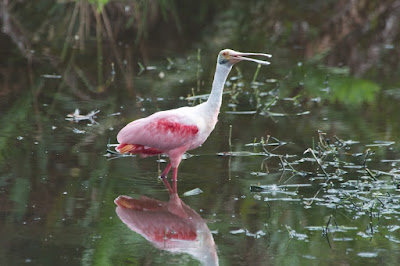

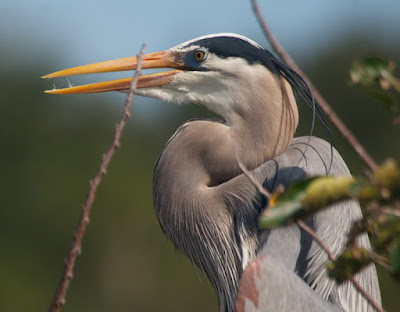





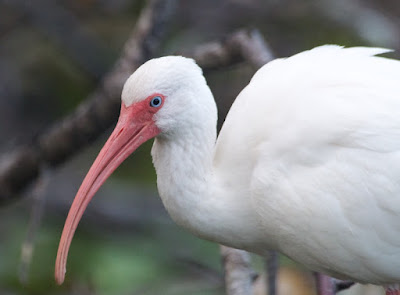



















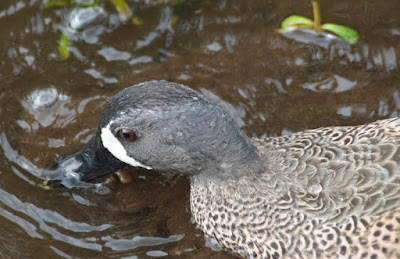










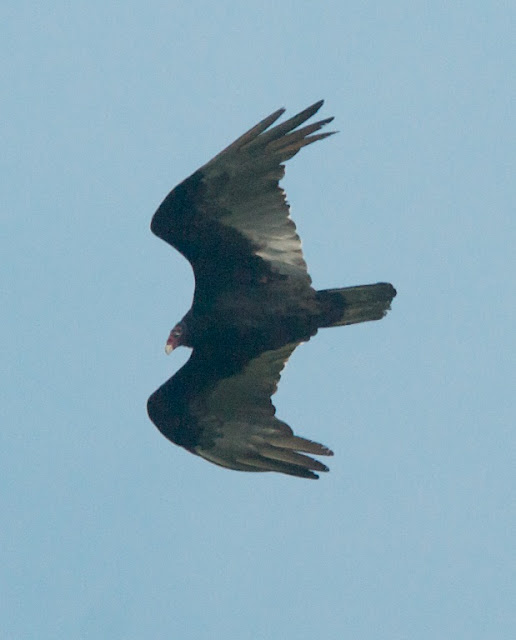






No comments:
Post a Comment